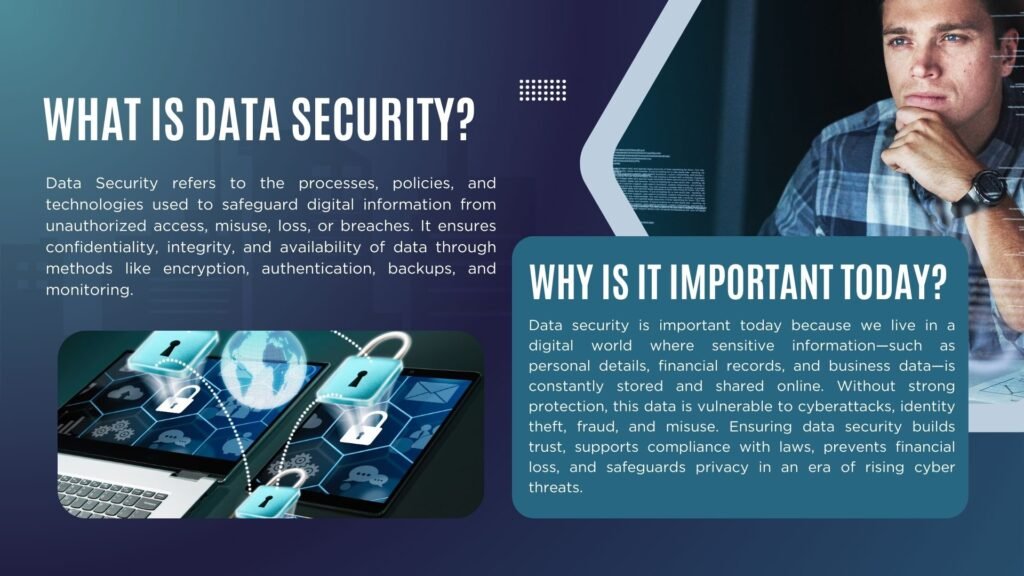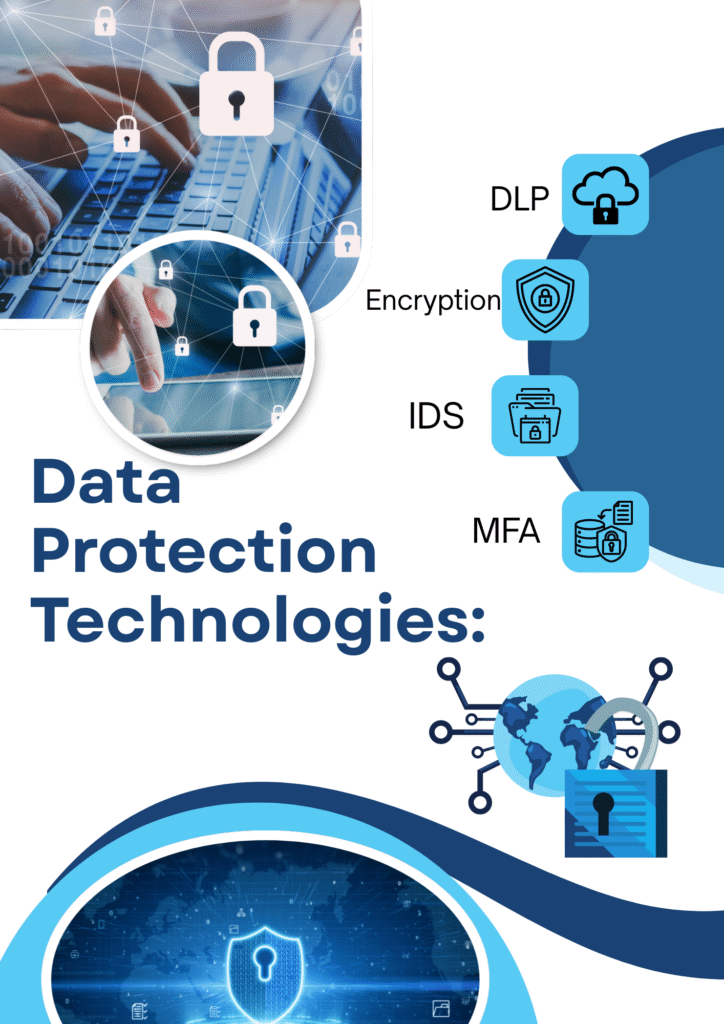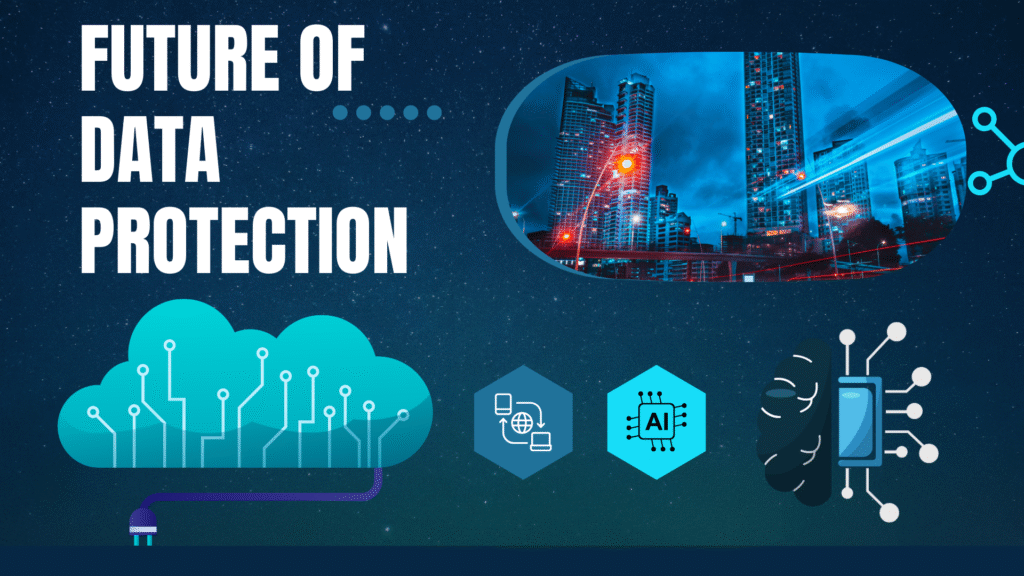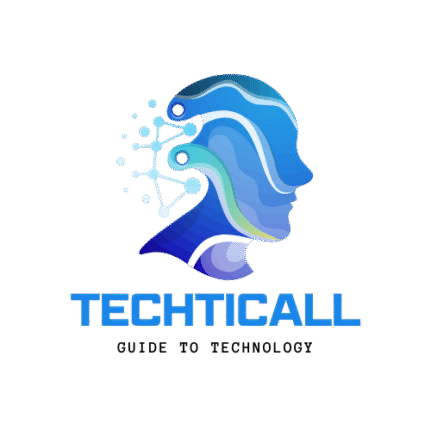Introduction:
In today’s interconnected world, information has gotten to be one of the most important resources for data protection people, businesses, and governments. From individual subtle elements put away on social media stages to touchy monetary records kept by organizations, information powers our day by day lives. Be that as it may, this developing reliance on advanced frameworks moreover uncovered us to exceptional dangers. Information breaches, cyberattacks, and unauthorized information misuse are expanding at disturbing rates, driving to destroying budgetary and reputational losses.
Data protection, in this manner, is no longer a luxury—it is a need. It envelops a set of methodologies, approaches, and innovations planned to protect individual and organizational data from debasement, compromise, or misfortune. Whether it is guaranteeing compliance with worldwide directions such as GDPR (Common Information Assurance Control) or actualizing specialized arrangements like encryption, information security is at the center of advanced trust.
This article investigates the concept of information assurance in profundity, looking at its significance, key standards, challenges, cutting edge advances, best hones, and its future part in our advancing advanced ecosystem.

The Significance of Information Protection:
The require for solid information security measures stems from numerous components, each of which highlights the dangers of misused or unsecured data:
- Personal Protection – People share enormous sums of individual information every day. Without legitimate assurance, such information can be abused, driving to personality robbery, stalking, or budgetary fraud.
- Business Keenness – Companies depend on client believe. A information breach can result in critical monetary misfortunes, claims, and changeless harm to reputation.
- Legal Commitments – Governments around the world uphold strict controls that require organizations to ensure client information.
- National Security – Delicate information concerning framework, defense, and insights must be ensured to anticipate dangers to national security.
- Technological Dependence – With cloud computing, IoT (Web of Things), and fake insights progressively depending on gigantic datasets, the dangers related with information compromise are higher than ever.
In brief, information assurance guarantees secrecy, keenness, and accessibility of information—the three foundational columns of data security.
Principles of Data Protection:
To successfully protect data, a few directing standards must be taken after. These standards are laid out in worldwide information security controls and frame the spine of viable strategies.
1. Lawfulness, Decency, and Transparency:
Data ought to be collected and handled legally, reasonably, and in a straightforward way. People must know how their data is being used.
2. Purpose Limitation:
Data ought to as it were be collected for indicated, express, and genuine purposes. Utilizing information past its expecting reason is a breach of trust.
3. Data Minimization:
Organizations ought to as it were collect the information essential for their operations. Collecting over the top information increments dangers unnecessarily.
4. Accuracy:
Data must be kept exact and up to date. Wrong information can lead to destitute decision-making and client dissatisfaction.
5. Storage Limitation:
Data ought to not be kept longer than vital. Drawn out capacity increments powerlessness to attacks.
6. Integrity and Confidentiality:
Security measures must be actualized to guarantee information astuteness, privacy, and flexibility against unauthorized access.
7. Accountability:
Organizations must take duty for their information dealing with hones, guaranteeing they meet all administrative and moral obligations.
Common Information Assurance Challenges:
Despite progressions in innovation, organizations confront various challenges in executing successful information assurance strategies:
1. Cybersecurity Threats:
Hackers utilize progressed methods such as phishing, ransomware, and malware to abuse vulnerabilities in frameworks.
2. Human Error:
Employees stay one of the greatest dangers to information security. Basic botches like sending an e-mail to the off-base beneficiary can uncover touchy data.
3. Third-Party Risks:
Outsourcing administrations to third parties can present vulnerabilities if sellers fall flat to execute satisfactory security measures.
4. Data Overload:
With the rise of enormous information, organizations frequently battle to oversee and secure the sheer volume of data they collect.
5. Insider Threats:
Employees or temporary workers with get to to delicate information may intentioned abuse it for individual gain.
6. Cloud Security Issues:
While cloud computing upgrades adaptability, it moreover raises questions around possession, control, and security of information put away in shared environments.
Data Protection Technologies:
Several advances play a basic part in shielding touchy information. These arrangements combine encryption, confirmation, and checking to give vigorous protection.
1. Encryption:
Encrypting information guarantees that as it were authorized clients with unscrambling keys can get to data, making stolen information futile to attackers.
2. Firewalls and Interruption Location Frameworks (IDS):
These avoid unauthorized get to to systems and screen activity for pernicious activity.
3. Data Misfortune Anticipation (DLP):
DLP arrangements screen, distinguish, and piece unauthorized exchanges of touchy information exterior organizational networks.
4. Multi-Factor Confirmation (MFA):
Requiring more than one strategy of verification diminishes the hazard of unauthorized access.
5. Backup and Calamity Recovery:
Regular reinforcements guarantee that information can be reestablished in case of cyberattacks, framework disappointments, or characteristic disasters.
6. Tokenization and Anonymization:
These strategies supplant touchy data with non-sensitive counterparts, decreasing the dangers of exposure.`These strategies supplant touchy data with non-sensitive counterparts, decreasing the dangers of exposure.
7. Artificial Insights and Machine Learning:
AI-powered frameworks distinguish bizarre designs, making a difference organizations distinguish and react to dangers faster.

Best Hones for Information Protection
Organizations and people can receive a few best hones to fortify their defenses:
- Educate and Prepare Representatives – Standard preparing makes a difference representatives recognize phishing endeavors, hone secure secret word administration, and handle touchy information responsibly.
- Implement Solid Get to Controls – Not each representative ought to have get to to all information. Role-based get to limits exposure.
- Regular Computer program Upgrades – Obsolete frameworks are inclined to vulnerabilities. Keeping program up to date is a straightforward however successful defense.
- Develop a Information Assurance Approach – A well-defined approach traces how information is collected, put away, utilized, and arranged of.
- Monitor Frameworks Ceaselessly – Steady observing makes a difference distinguish bizarre behavior or breaches in real-time.
- Secure Versatile Gadgets – With inaccessible work and BYOD (Bring Your Claim Gadget) arrangements, securing smartphones and tablets is crucial.
- Adopt a Zero-Trust Show – This security system expect that dangers may exist interior and exterior systems, implementing strict personality confirmation at each stage.
- Regular Reviews and Compliance Checks – Inner and outside reviews guarantee information assurance methodologies are compelling and compliant with regulations.
Global Information Assurance Regulations
Governments around the world uphold rigid directions to protect information. A few of the most powerful include:
- GDPR (Common Information Assurance Control) – A European Union control that sets the standard for information protection worldwide.
- CCPA (California Customer Security Act) – Gifts California inhabitants rights over their individual data.
- HIPAA (Wellbeing Protections Movability and Responsibility Act) – Secures persistent wellbeing data in the Joined together States.
- LGPD (Lei Geral de Protacio de Dados) – Brazil’s comprehensive information security law.
- PIPEDA (Individual Data Assurance and Electronic Reports Act) – Canada’s government security law for private-sector organizations.
These systems emphasize straightforwardness, responsibility, and client rights, compelling organizations to handle information responsibly.
The Part of Information Assurance in Developing Technologies
- Cloud Computing – Securing information put away in multi-tenant cloud situations requires progressed encryption and strict compliance checks.
- Internet of Things (IoT) – With billions of associated gadgets, information assurance is basic to avoid misuse through unsecured endpoints.
- Artificial Insights – AI frameworks depend on enormous datasets. Guaranteeing moral collection and utilize of information is fundamental to avoid predisposition and misuse.
- Blockchain – Whereas blockchain offers inborn security through decentralization, guaranteeing security inside straightforward systems remains a challenge.
- Quantum Computing – Quantum headways may debilitate conventional encryption, pushing the require for quantum-resistant cryptography.
Future of Data Protection
Looking ahead, information assurance will proceed to advance. Key patterns forming the future include:
- Privacy by Plan – Security measures will be coordinates into frameworks from the ground up or maybe than included later.
- Decentralized Character Administration – People will pick up more noteworthy control over their individual information.
- AI-Powered Danger Discovery – Progressed calculations will foresee and counter cyber dangers proactively.
- Global Harmonization of Laws – As information streams over borders, universal participation on information assurance measures will likely increase.
- Quantum-Safe Security – Organizations will embrace quantum-resistant encryption to remain ahead of innovative risks.
The future of information assurance will be characterized by flexibility, advancement, and a commitment to defending advanced trust.

Conclusion:
Data security is the foundation of a secure computerized world. As the sum of data, we create proceeds to develop, so do the dangers relate with it. Businesses, governments, and people must work together to construct vigorous frameworks, uphold strict arrangements, and grasp imaginative innovations that ensure touchy information. By following to standards of straightforwardness, responsibility, and security, society can saddle the control of information whereas minimizing its risks.
In substance, ensuring information implies ensuring individuals, their protection, their vocations, and their future.
FAQs on Information Protection
1. What is the contrast between information security and information privacy?
Data assurance alludes to the techniques and advances utilized to protect data from unauthorized get to, misfortune, or debasement. Information security centers on the rights of people with respect to how their individual information is collected, put away, and used.
2. Why is information encryption important?
Encryption changes over information into garbled code that can as it were be gotten to with a unscrambling key. Indeed if programmers take scrambled information, it remains futile to them without the key.
3. How do businesses advantage from data protection?
Strong information assurance moves forward client believe, guarantees lawful compliance, anticipates budgetary misfortunes from breaches, and upgrades trade reputation.
4. What part do workers play in data protection?
Employees are the to begin with line of defense. Through preparing, mindfulness, and capable hones, they can essentially decrease the dangers of breaches caused by human mistake or negligence.
5. What businesses require information assurance the most?
Industries such as healthcare, keeping money, e-commerce, instruction, and government divisions handle exceedingly touchy data and are prime targets for cybercriminals. These businesses require the most exacting information assurance measures.
6. How does cloud computing influence information data protection?
Cloud computing offers adaptability and versatility but raises concerns almost information possession, control, and security.
